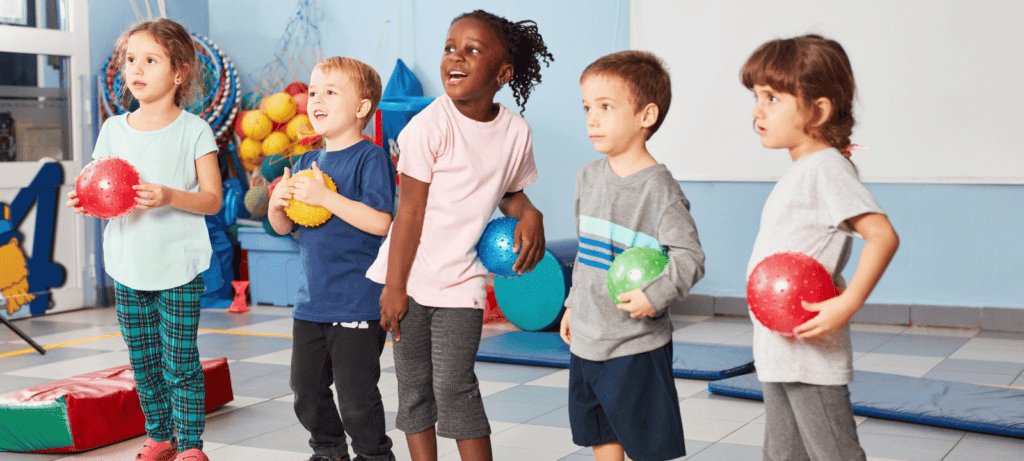Establishing lifelong fitness habits in children is crucial for their overall health and well-being. Many parents struggle with how to effectively encourage their kids to engage in physical activity consistently. This article provides practical strategies for fostering a culture of fitness within families, emphasizing the importance of active participation and modeling healthy behaviors. By involving the whole family in fitness activities, parents can create a supportive environment that not only promotes physical health but also strengthens family bonds and instills positive habits that last a lifetime.
In this article you will find:
Understanding the Importance of Physical Activity for Children
Physical activity is not merely a way for children to expend energy; it is a crucial element in their overall development and well-being. Engaging in regular physical activity fosters a variety of benefits that extend far beyond just fitness. Understanding these benefits can empower parents, educators, and caregivers to promote active lifestyles among children.
Physical Benefits of Activity
One of the most evident advantages of regular physical activity is its impact on physical health. Children who participate in daily exercise are less likely to experience obesity and related health issues. The key benefits include:
- Improved cardiovascular health: Regular activity strengthens the heart and lungs, reducing the risk of heart disease in the future.
- Enhanced muscle and bone strength: Weight-bearing exercises promote bone density and muscle development, crucial during growth spurts.
- Better coordination and balance: Engaging in various physical activities helps children develop motor skills essential for daily life.
Mental and Emotional Well-being
Physical activity is equally vital for mental health. Children often face stressors, whether from school, social interactions, or family dynamics. Exercise serves as a natural outlet for stress relief and emotional regulation. Key mental health benefits include:
- Reduction in anxiety and depression: Exercise triggers the release of endorphins, which can alleviate feelings of sadness and promote a sense of well-being.
- Boosted self-esteem: Achieving fitness goals, whether big or small, can enhance a child’s confidence and self-worth.
- Improved focus and academic performance: Studies indicate that regular physical activity can enhance cognitive function, leading to better concentration in the classroom.
Social Skills Development
Participating in group sports or physical activities can also enhance social skills. Children learn important life skills such as teamwork, communication, and conflict resolution through collaborative play. Some significant social benefits include:
- Building friendships: Shared activities foster connections among peers, creating lasting friendships.
- Learning teamwork: Participating in team sports teaches children how to work together towards common goals.
- Enhancing communication skills: Engaging in group activities helps children express themselves and understand others better.
Long-term Health Implications
Encouraging children to be active not only benefits their immediate well-being but also sets the stage for a lifetime of healthy habits. Research indicates that children who engage in regular physical activity are more likely to continue these habits into adulthood, reducing their risk of chronic diseases such as obesity, type 2 diabetes, and heart disease later in life. For more detailed insights into the long-term impacts of physical activity, you can refer to this research article.
In summary, understanding the importance of physical activity for children is foundational for fostering a healthier future. By promoting active lifestyles, we not only enhance their physical and mental health but also equip them with essential life skills. As we progress to explore how to create a balanced routine for optimal growth and development, remember that establishing these habits early in life will lead to lifelong benefits.
Creating a Balanced Routine for Optimal Growth and Development
Establishing a balanced routine is essential for children to thrive both physically and mentally. A well-structured routine not only enhances their growth and development but also instills discipline and promotes healthy habits that can last a lifetime. Here, we will delve into the key components of creating an effective routine for children.
Incorporating a Variety of Activities
To foster well-rounded development, it’s crucial to include a diverse range of activities in a child’s routine. This variety ensures that different muscle groups are engaged and helps in developing various skills. Consider the following types of activities:
- Aerobic activities: Engaging in activities such as running, cycling, or swimming can significantly enhance cardiovascular fitness.
- Strength training: Incorporating age-appropriate bodyweight exercises like push-ups and squats can promote muscle development and bone health.
- Flexibility exercises: Activities such as yoga or stretching can improve flexibility and reduce the risk of injuries.
- Recreational sports: Participation in sports not only promotes physical fitness but also helps in social skill development.
Setting Realistic Goals
When creating a balanced routine, it’s essential to set realistic and achievable goals. This process not only motivates children but also helps them track their progress. Here are some tips for goal-setting:
- SMART goals: Encourage children to set Specific, Measurable, Achievable, Relevant, and Time-bound goals. For example, aiming to complete a certain number of laps in the pool within a month.
- Celebrate achievements: Recognizing milestones, no matter how small, can boost a child’s confidence and motivation.
- Adjust as needed: Be flexible and ready to adjust goals based on the child’s progress and interests.
Creating a Structured Daily Schedule
A structured daily schedule can help children understand the importance of time management while balancing school, play, and physical activities. Here’s how to design an effective daily routine:
- Morning routine: Start the day with a brief physical activity session, such as stretching or a short jog, to energize the body.
- Scheduled playtime: Allocate specific times for outdoor play or sports practice, ensuring it’s a consistent part of their day.
- Homework and rest: Balance academic responsibilities with downtime, allowing for recovery and relaxation.
- Family activities: Include family-oriented physical activities, such as evening walks or weekend sports, to strengthen bonds and encourage active habits.
Promoting Healthy Nutrition Alongside Activity
A balanced routine should also encompass healthy eating habits that complement physical activity. Proper nutrition fuels the body and supports growth. Here are some key considerations:
- Balanced meals: Encourage a diet rich in fruits, vegetables, whole grains, and lean proteins to provide essential nutrients for energy and development.
- Hydration: Stress the importance of staying hydrated, especially during and after physical activities.
- Mindful eating: Teach children to listen to their bodies and recognize hunger cues, promoting a healthy relationship with food.
In conclusion, creating a balanced routine for children involves incorporating a variety of physical activities, setting realistic goals, establishing a structured schedule, and promoting healthy nutrition. By doing so, we lay the foundation for optimal growth and development, setting children on a path to lifelong health and wellness. As we transition to the next topic, we will explore how to incorporate fun activities to boost engagement and joy in children’s fitness journeys.
Incorporating Fun Activities to Boost Engagement and Joy
Physical activity is essential for children, but it doesn’t have to feel like a chore. Incorporating fun activities into their routines can significantly enhance engagement, joy, and overall motivation towards staying active. When children enjoy what they are doing, they are more likely to participate consistently, leading to better health outcomes. Here are several strategies to make physical activity enjoyable for children.
Utilizing Play-Based Learning
Play is a natural way for children to learn and develop new skills. By integrating physical activity into play, children can engage without feeling the pressure of formal exercise. Here are some play-based ideas:
- Active games: Incorporate games like tag, hide-and-seek, or capture the flag that involve running and movement.
- Obstacle courses: Set up a simple obstacle course in the backyard or a park using cones, ropes, or hula hoops to encourage agility and coordination.
- Dance parties: Host regular dance sessions at home where children can express themselves through movement to their favorite music.
Exploring Nature
Nature provides a perfect backdrop for fun and engaging activities. Exploring the outdoors not only encourages physical movement but also fosters a love for the environment. Consider the following outdoor activities:
- Hiking: Organize family hikes on local trails, encouraging children to discover new landscapes and wildlife.
- Gardening: Involve children in gardening activities, which can be both physically engaging and educational about food sources.
- Nature scavenger hunts: Create a scavenger hunt list of items to find in the park, turning a simple walk into an adventure.

Incorporating Technology Wisely
While excessive screen time is often discouraged, technology can be a powerful tool for promoting physical activity when used wisely. Here are ways to harness technology:
- Fitness apps and games: Use interactive fitness apps that gamify physical activity, making it more exciting. Apps like Pokémon GO encourage walking and exploring while having fun.
- Virtual classes: Participate in online dance, yoga, or martial arts classes that engage children in structured yet fun activities.
- Track progress: Utilize fitness trackers to help children monitor their activities and celebrate their achievements.
Creating a Family Fitness Culture
When families participate together in physical activities, it fosters an environment where fitness is valued and fun. Here’s how to create a family fitness culture:
- Family sports days: Organize regular family sports days or activities, such as soccer games or cycling outings, to encourage bonding and physical activity.
- Fitness challenges: Set up friendly fitness challenges among family members, such as who can do the most steps in a week, and celebrate the winners.
- Cooking healthy together: Involve children in preparing healthy meals, linking nutrition to physical activity and overall wellness.
Emphasizing Creativity and Imagination
Encouraging creativity in physical activities can also enhance enjoyment. Here are some imaginative ways to get children moving:
- Role-playing games: Engage in role-playing scenarios where children can act out their favorite characters while moving around.
- DIY sports: Create new games using household items, such as a homemade bowling alley using plastic bottles or a mini-golf course in the backyard.
- Art in motion: Combine art with movement by encouraging children to create dance routines or movement patterns that express their artistic side.
Incorporating fun activities into children’s fitness routines not only boosts engagement but also cultivates a positive attitude towards physical activity. By making exercise enjoyable, children are more likely to develop lifelong habits that prioritize health and happiness. As we move forward, the next topic will focus on how to encourage lifelong fitness habits through family involvement, ensuring that these joyful experiences continue throughout their lives.
Encouraging Lifelong Fitness Habits Through Family Involvement
Building a foundation for lifelong fitness habits starts at home, and family involvement plays a pivotal role in shaping children’s attitudes towards physical activity. When parents and caregivers actively engage in fitness activities with their children, they not only set a positive example but also create a supportive environment that encourages healthy lifestyle choices. Here are various strategies to foster lifelong fitness habits through family participation.
Modeling Healthy Behaviors
Children learn by observing the behaviors of adults in their lives. By modeling healthy habits, parents can effectively instill the importance of fitness in their children. Consider these approaches:
- Be active together: Regularly participate in physical activities as a family, such as biking, hiking, or playing sports. This demonstrates that fitness is a priority.
- Discuss health openly: Talk about the benefits of staying active and eating healthy, helping children understand the importance of these habits in their daily lives.
- Share personal goals: Share your own fitness goals and progress with your children, showing them that everyone can strive for improvement.
Creating Family Fitness Traditions
Establishing family traditions centered around fitness can create lasting memories and emphasize the importance of an active lifestyle. Here are some ideas:
- Weekend sports days: Dedicate weekends to playing sports together, whether it’s a friendly soccer match or a day at the swimming pool.
- Seasonal challenges: Create seasonal fitness challenges, such as a summer hiking series or winter snow sports days, to keep everyone engaged throughout the year.
- Family fitness events: Participate in local charity runs or community sports events as a family to bond over a common goal and give back to the community.
Incorporating Fitness into Daily Routines
Integrating physical activity into daily routines makes fitness a natural part of life. Here’s how families can make fitness a habit:
- Active transportation: Encourage walking or biking to school or nearby destinations instead of driving, promoting movement as part of the daily commute.
- Family exercise sessions: Set aside time for family workouts, whether it’s yoga, dance, or strength training, making it a regular occurrence.
- Household chores as workouts: Turn chores into fun activities by incorporating movement, such as dancing while cleaning or racing to complete tasks.
Encouraging Group Activities and Social Interaction
Involving friends and other family members in fitness activities can enhance motivation and enjoyment. Here’s how to encourage social interaction through fitness:
- Join community sports teams: Encourage children to join local sports teams or clubs, where they can meet peers and develop social skills while staying active.
- Organize family fitness gatherings: Host family reunions or gatherings centered around physical activities, such as a picnic with games or a group hike.
- Participate in group classes: Enroll in family-friendly fitness classes, such as martial arts or dance, that promote bonding while staying fit.
Celebrating Achievements Together
Recognizing and celebrating fitness milestones can reinforce the importance of staying active. Here are ways to celebrate together:
- Set collective goals: Work together to set fitness goals, whether it’s a certain number of active days per week or participating in a specific event, and celebrate when these goals are met.
- Reward accomplishments: Create a reward system for achieving fitness goals, such as a family outing or a special treat, to motivate continued participation.
- Document progress: Keep a family fitness journal or photo album to track activities and milestones, making the journey visible and memorable.
By encouraging lifelong fitness habits through family involvement, parents can help instill a love for physical activity in their children. This not only promotes healthier lifestyles but also strengthens family bonds and creates lasting memories. To further explore how to support children’s health and development, consider checking out this guideline on nurturing healthy habits. Creating a balanced routine for children is vital for their physical and mental development. Incorporate a variety of activities, such as aerobic exercises, strength training, and recreational sports, to engage different muscle groups and promote overall fitness. Setting realistic goals, establishing structured daily schedules, and ensuring a nutritious diet are essential components of this routine.
Family involvement plays a crucial role in fostering lifelong fitness habits. Parents should model healthy behaviors, create family fitness traditions, and integrate physical activity into daily life. Encouraging group activities and celebrating achievements together can enhance motivation and strengthen family bonds, making fitness an enjoyable and integral part of children’s lives.




